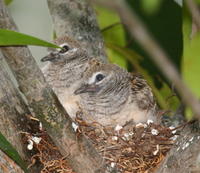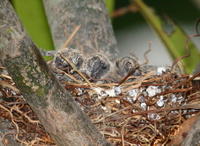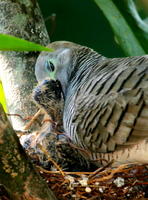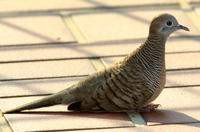ZEBRA DOVES - 11. The return of the doves
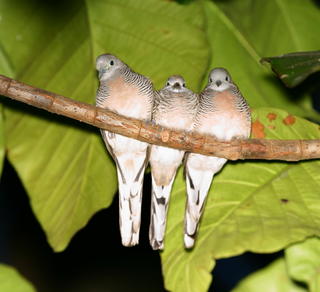 I did not expect the doves to return. But they did.
I did not expect the doves to return. But they did. Last evening at 7.10 pm there was a faint call of a dove. Suddenly a bird landed on a branch of my Artocarpus tree. Two others followed. Surprise of surprise, they were the two fledglings and a parent bird.
There was an initial scrambling of who was to perch where. Obviously the choice location was to be in the centre, squeezed between a parent and a fledgling. The younger of the two finally got the choice spot.
The fledglings had yet to fully develop the blue orbital rings, that of the older more pronounced that the younger. The pale pink breast was clearly seen in the fledglings. In the older, the pinkish area went right up to the neck, not so in the younger.
They were on the same spot throughout the night. This morning at 7.20 am they suddenly became active, pecking the parent bird around the neck, possibly to be fed. But this was not to be. There was a distant call of the other parent (male?) and suddenly the bird flew off to a nearby perch. A few minutes later both fledglings followed.
The older of the fledgling is now 19 days old. How long more will they be dependent on the parents?
Labels: Nesting



